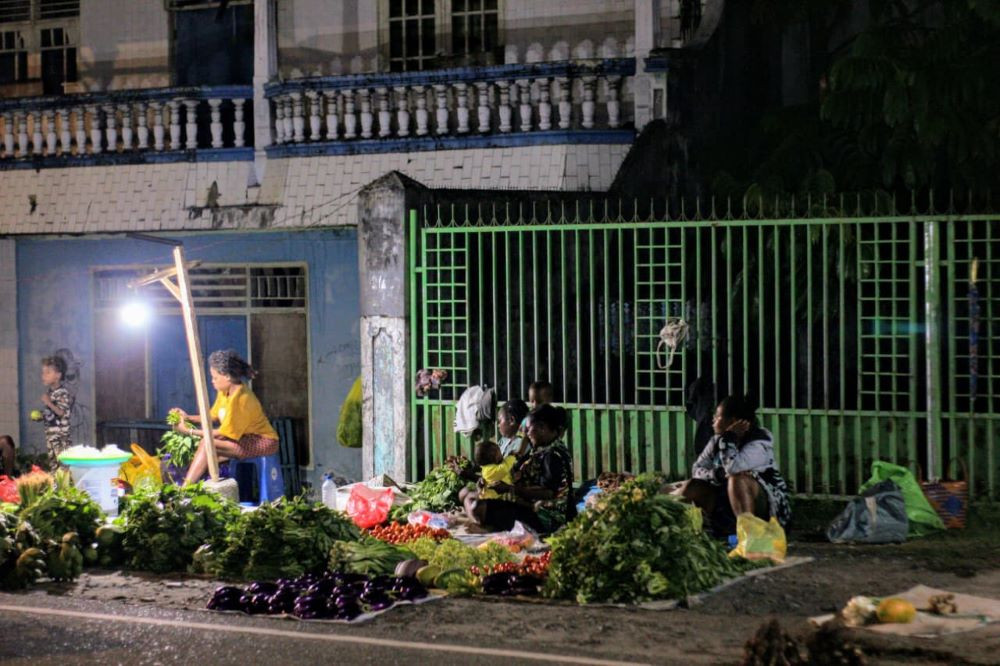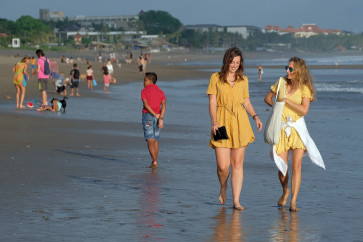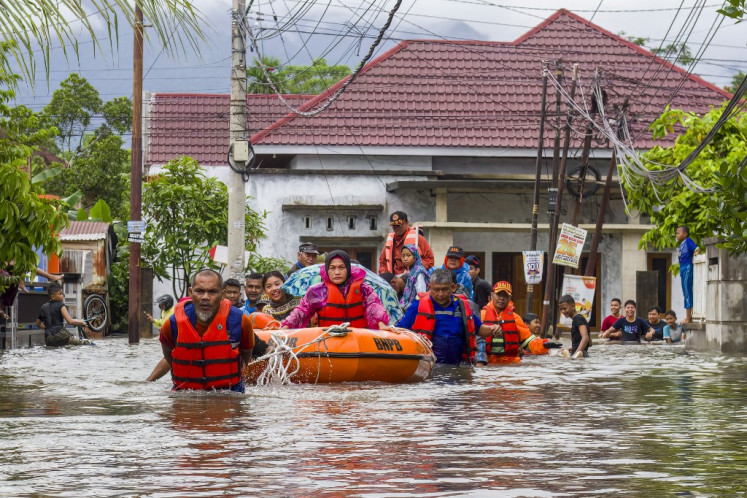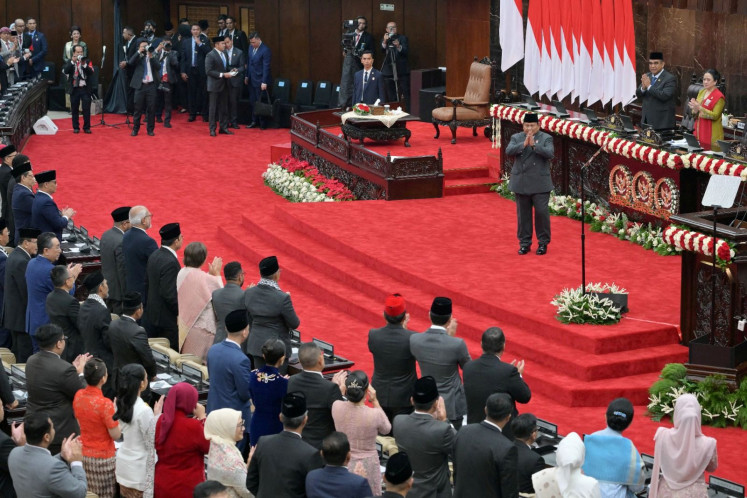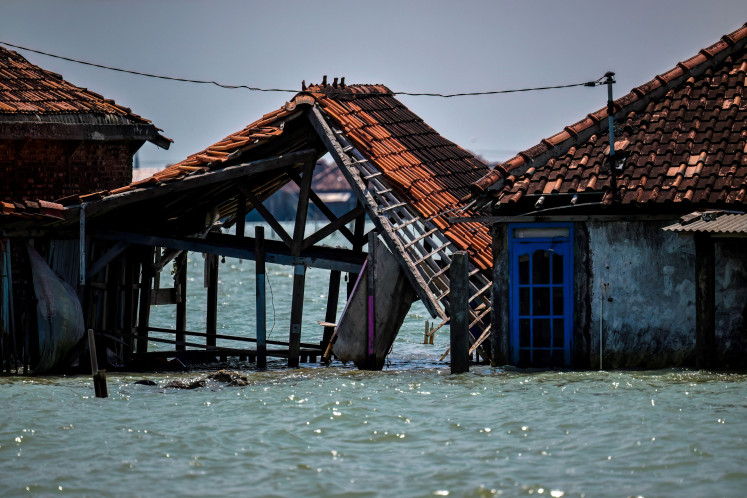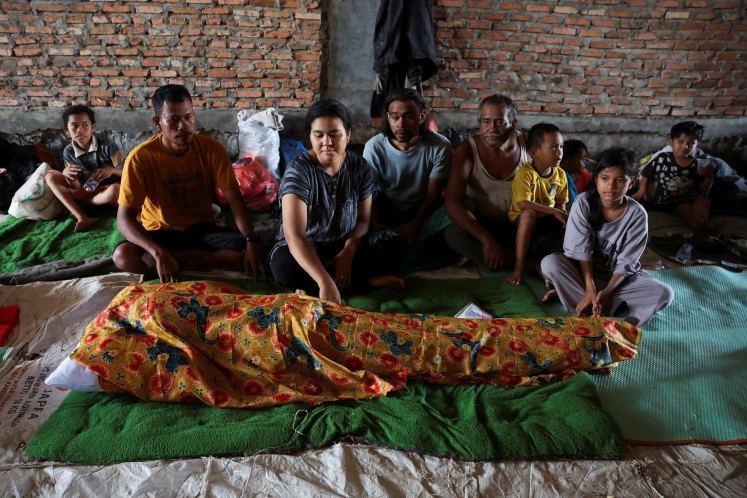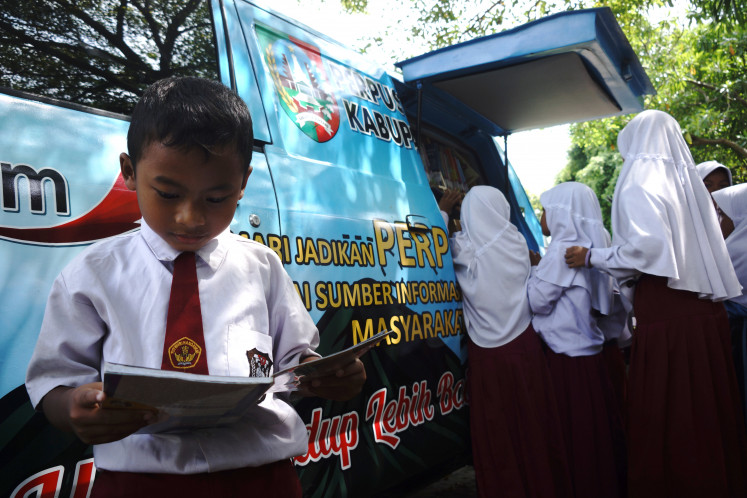Popular Reads
Top Results
Can't find what you're looking for?
View all search resultsPopular Reads
Top Results
Can't find what you're looking for?
View all search resultsThe thousands of steps of Arfak Mountains women
The "mamas" of the Arfak Mountains are not merely housewives; they are the hardworking breadwinners who determine the course of life for their community.
Change text size
Gift Premium Articles
to Anyone
T
he women, or "mamas", of the Arfak Mountains in West Papua have a remarkable story that few people are familiar with. This is unsurprising, as even the location of the Arfak Mountains regency is a mystery to most Indonesians, without the help of Google.
This new regency, carved out of Manokwari regency in 2012, is situated in the northeastern part of the "Bird’s Head" region of the province.
In 2023, Arfak Mountains’ population was less than half a million, but it grew to nearly 800,000 after its division. The split is understandable, as the Arfak Mountains' residents are almost exclusively indigenous Papuans from the Sough, Hatam and Menyah sub-groups, a stark contrast to the diverse population of Manokwari, the provincial capital.
Despite their different sub-groups, the women of Arfak share a similar status and play a major role in their community. As roughly half of the regency’s population, these women, whether married (some marry young) or single, are the primary drivers of both productive and reproductive labor. They are often full-time farmers, responsible for preparing land, planting, harvesting and selling crops like carrots, potatoes and other highland vegetables.
The unique architecture of Arfak houses, known as rumah kaki seribu (thousand-leg houses), also influences the women's work. These stilt houses are built on pillars measuring between 4 and 5 meters.
The distance between the high pillars is around 30 centimeters, so a single house with an area of 100 square meters will stand on dozens of pillars. All the wood used for the traditional houses is taken by men from the forests in the Arfak Mountains.
The space underneath of the house is a dedicated workspace for women. Here, they sort seeds, store firewood and raise livestock.
Women are also responsible for the maintenance and creation of traditional roofing materials from palm, sago, straw or pandanus leaves. While men weave the rattan and bamboo floors, women handle daily upkeep and ensure proper ventilation.
Even during breaks from gardening, women remain busy managing the home, ensuring there is enough firewood to warm their houses against the cold mountain air. During harvest season, they return to the fields, and it is almost exclusively the women who transport and sell the produce at the distant market in Manokwari.
The journey to Manokwari is long and difficult. Though double-axle trucks are now available, the cost is high, Rp 500,000 (US$30.40) per person one-way, plus Rp 200,000 per sack of produce. The trip is also dependent on clear roads, free of landslides or fog.
Once in Manokwari, the "mamas" stay for several days, sometimes up to a week, renting accommodation together or staying with relatives until all their goods are sold. While men work in the forest and carve statues, they are not expected to care for the home or children. As a result, mothers often bring their toddlers with them to the market. Only children who are already in school stay at home with their fathers.
When the mamas are away in Manokwari, the household chores are taken over by other women, such as their daughters or female relatives living in their homes. Usually, more than one family lives in a traditional Arfak house. However, the men (husbands), as heads of the family, receive services from the women around them.
In Manokwari, these women live frugally, selling their produce by laying sacks on the side of the road or in front of stores. They often eat only snacks and buy a proper meal only after their goods are sold. Before returning home, they use their earnings to buy essential necessities not available in the mountains, such as rice, sugar and cooking oil.
The money they earn is rarely kept for themselves, as it is used for the family. Ultimately, the mamas of the Arfak Mountains are not merely housewives; they are the hardworking breadwinners who determine the course of life for their community.
***
The writer is a lecturer at School of Business and Economics, University of Papua, Manokwari, West Papua.

